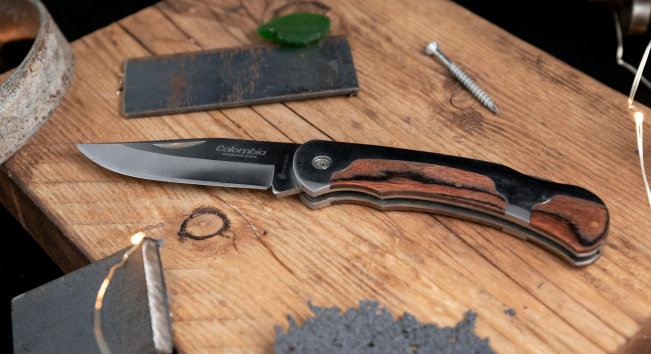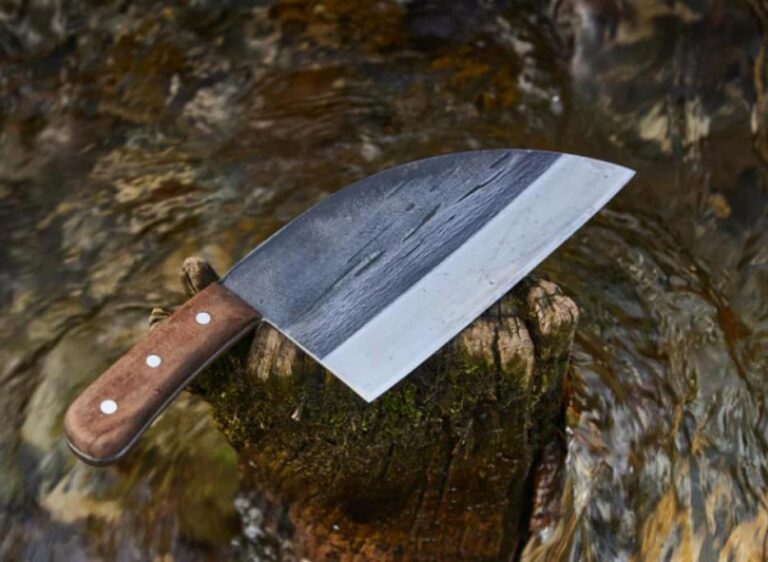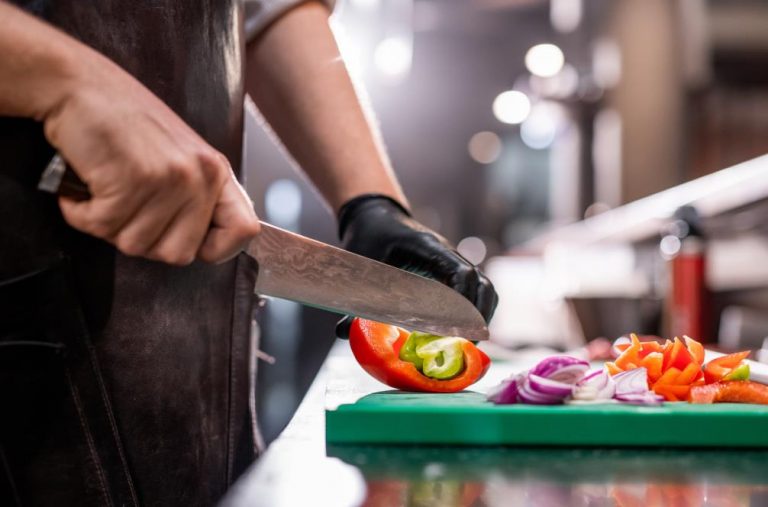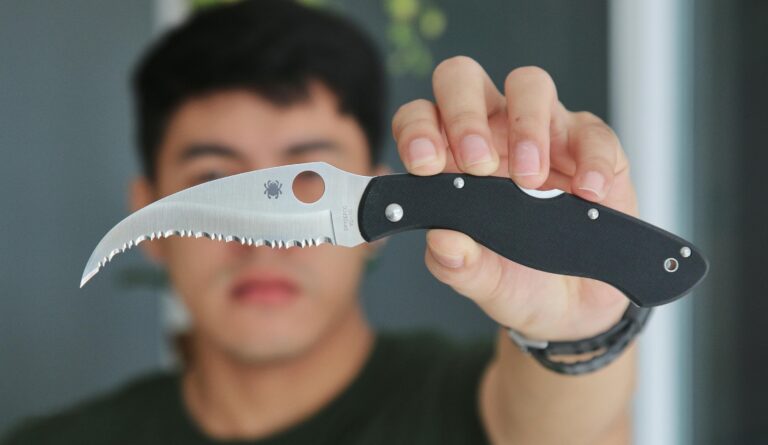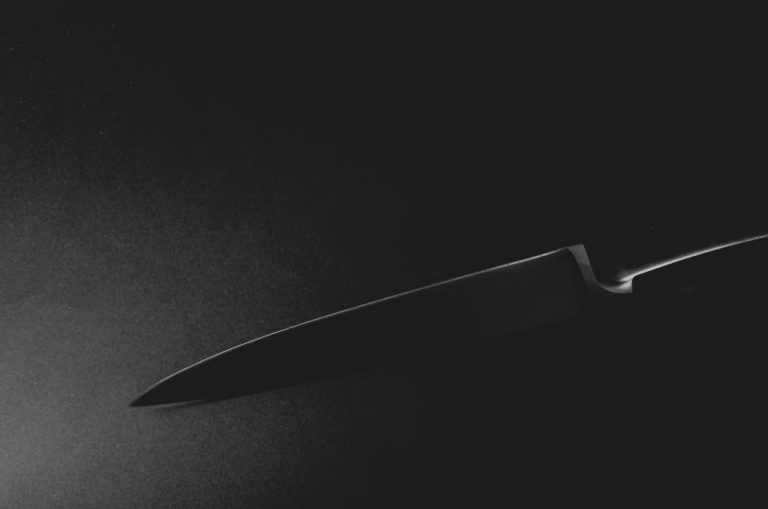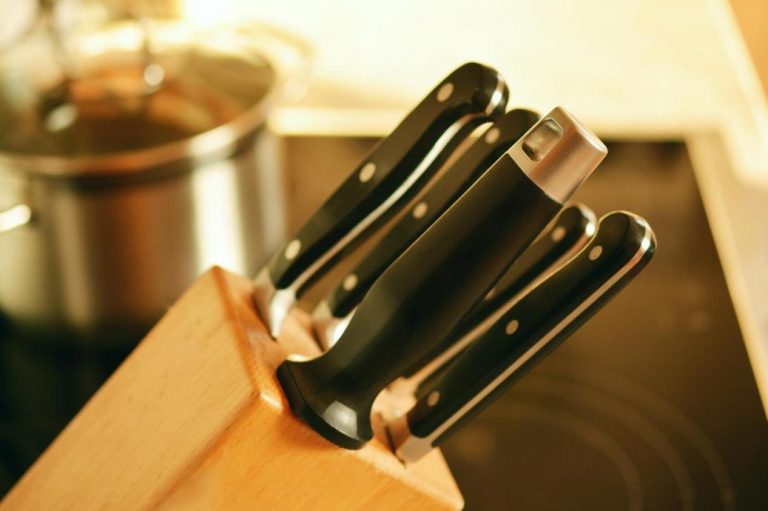Choosing between clip point and drop point blade shapes is key for picking the right knife for your customers. These two blade types each have unique designs and different uses and are popular options from many knife manufacturers.
If you want to help buyers find the best tool, you need to know how a clip point differs from a drop point. Sellers who understand these blade shapes can guide customers better and boost their sales with informed advice.
With this simple guide, you will get clear details, pros and cons, and practical tips for selling both clip point and drop point knives. Learn what sets each blade apart and which customers are most likely to prefer each type at your store.
What Is A Clip Point Knife
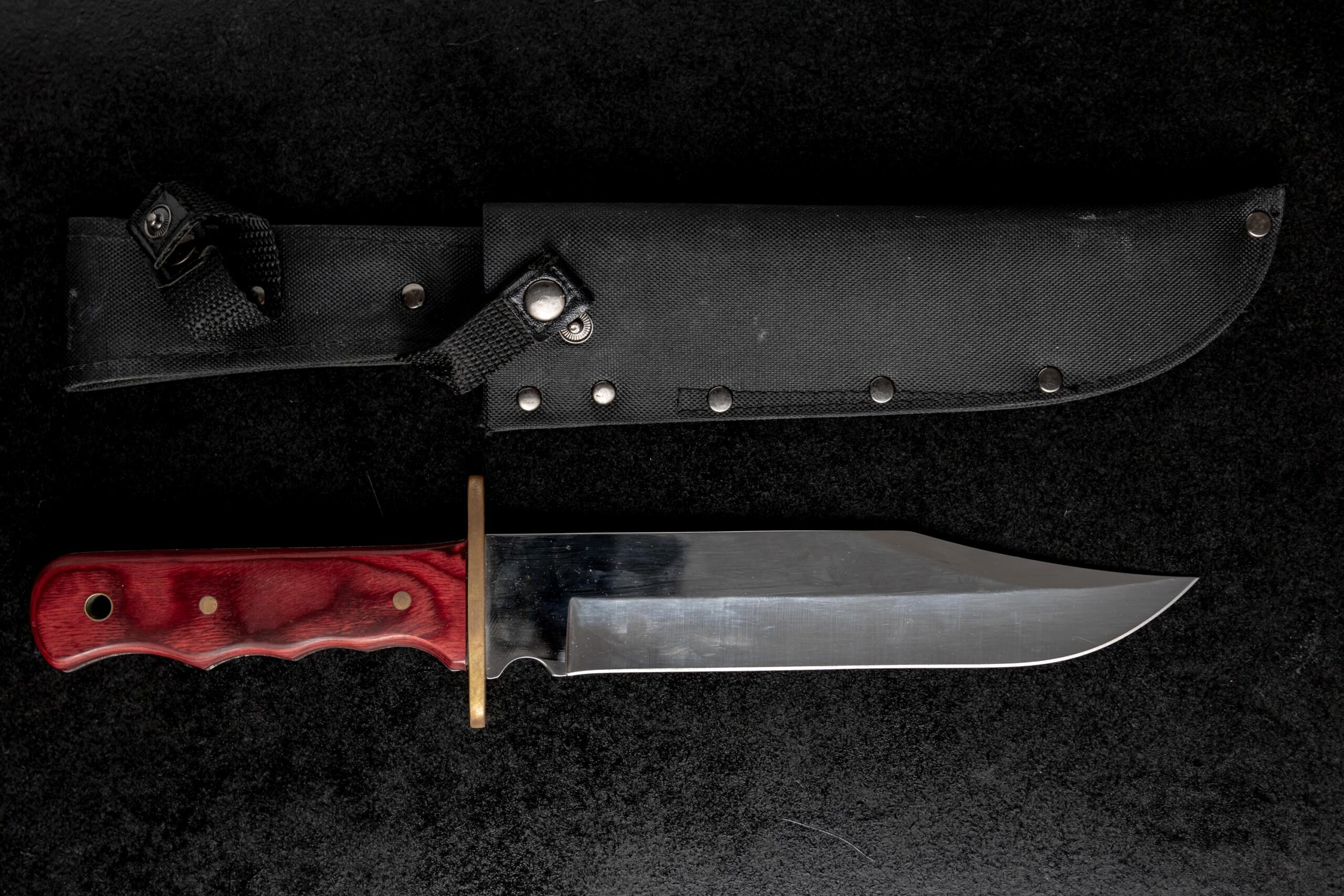
A clip point knife is easy to spot because of its distinct shape. The blade is angled, or “clipped,” on the back edge near the tip. This creates a thinner, sharper point that makes cutting tasks simpler.
You may notice this blade style on classic Bowie knives, which became popular in the 1800s. However, the design’s origins go back even further, possibly to Macedonian times, showing its historical value for sellers and collectors alike.
What Is A Drop Point Knife
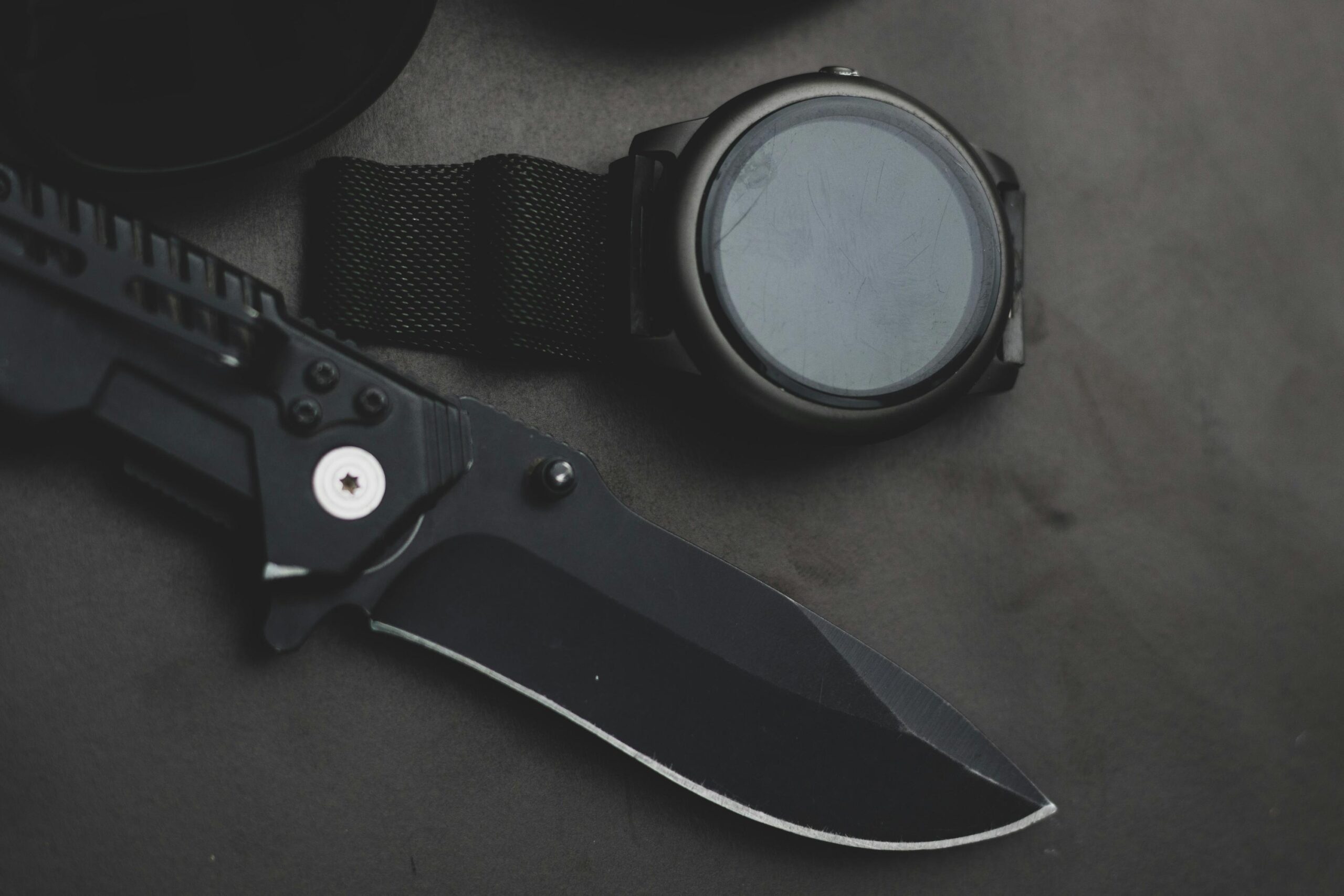
A drop point knife is one of the most popular blade shapes you can offer your customers. You’ll notice the spine of a drop point blade slopes gently from the handle to the tip, creating a convex curve. This shape makes the tip strong and less likely to break.
Clip Point vs Drop Point: Usage Scenarios Comparison
Both clip point and drop point blades have strengths depending on how you use your knife. Picking the right blade makes cutting, piercing, and detailed work easier and safer.
Everyday Carry (EDC)
If you need a knife for daily tasks, both shapes handle jobs like slicing boxes, opening packages, and simple repairs.
Drop point blades are tough, with a strong tip. This shape resists breaking if you pry or carve. The curve gives you good control for slicing and detail work, like whittling wood or cutting rope. You’ll notice how easy it is to avoid accidental puncturing.
Clip point blades have a finer tip for precision cutting. This makes it easy to do quick pierces and nimble trimming. However, the tip can be fragile when compared to a drop point. These knives suit you best if you need fine control or often do light-duty tasks.
Buy Wholesale Knives and Start Scaling up with Us Today
Contact us and connect with a sales rep to get a free quote.
Self-Defense
When self-defense matters, the blade’s tip and shape really count.
Clip point knives feature a sharp, narrow point. This helps make fast, deep punctures or stabs if needed. The clipped back means the blade enters targets smoothly, reducing resistance. Many people prefer the quick, piercing abilities of a clip point for self-defense, which is why classic fighting knives use this design.
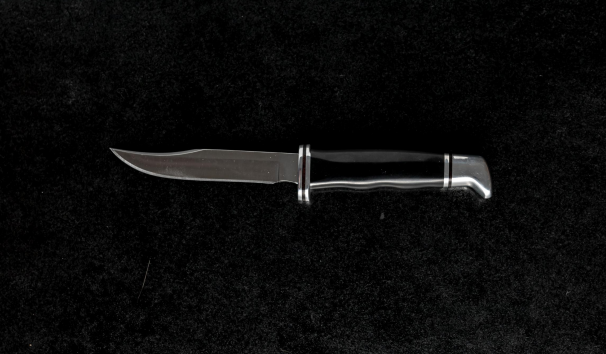
Drop point knives are more robust overall but have a thicker tip. While effective for slashing and some stabbing, the wider tip doesn’t penetrate as deeply. They are reliable if you want a blade less likely to snap during rough use but not as specialized for piercing.
Hunting
Hunting knives need to perform skinning, slicing, and sometimes butchering tasks after your hunt.
Drop point blades are often best for hunters. The long, curved belly is great for skinning game. The strong tip is good for controlled cuts and prying joints apart. You can rely on a drop point for most game-care tasks like slicing, disjointing, and some light batoning. Many outdoor enthusiasts say it’s the go-to for camping and survival.
Clip point knives work well for detailed piercing and precise skinning. The thinner tip gets into small spots, making it ideal for caping. However, the point can break under heavy use or if used to split bone.
Clip Point Vs Drop Point: Pros And Cons
Blade shape changes how a knife works for different jobs. You want to choose the best style for how you use your knife in outdoor and hunting activities.
Clip Point
- Pros:
- Features a distinct, concave “clip” near the spine, creating a narrower, more precise tip.
- The clipped section reduces overall blade weight slightly while maintaining strength in the main edge.
- Cons:
- The sharp angle of the clip can be a stress point, making it more prone to chipping under heavy lateral force.
- The narrower tip may feel less stable in applications requiring broad contact.
Drop Point
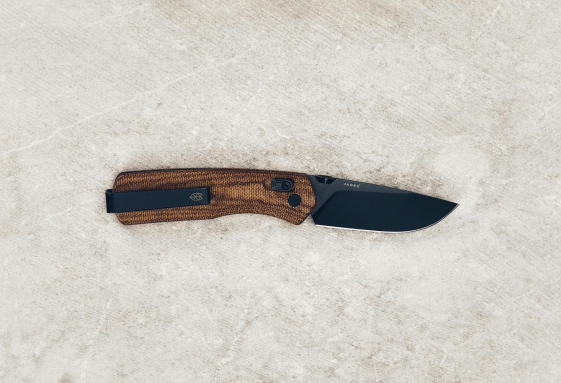
- Pros:
- Boasts a convex curve from the spine to the tip, distributing stress evenly and enhancing tip durability.
- The broader, rounded tip offers better stability and reduces the risk of accidental punctures.
- Cons:
- The gradual curve limits the tip’s precision compared to the clip point, making fine-detail work slightly less intuitive.
- The fuller tip adds marginally more weight to the blade’s forward section.
Clip Point Vs Drop Point: Sharpening And Maintenance
Both clip point and drop point knives need routine care to stay sharp and safe. You should clean your knife after each use and store it in a dry place. This helps prevent rust and corrosion, especially if your blade is made from high-carbon steel.
- Clip Point: The clipped portion creates a more acute, narrower tip with a steeper bevel near the point. This can make sharpening the tip itself trickier, as maintaining the precise angle without rounding the sharp edge requires careful attention. The main blade edge, however, is relatively straightforward to sharpen due to its consistent curve.
- Drop Point: The gradual, convex curve leading to the tip results in a broader, more robust point with a shallower, more uniform bevel across the edge. This makes sharpening simpler overall, as the consistent curve allows for smoother, more even strokes without the need for specialized focus on a narrow tip section.
Maintenance:
- Clip Point: The narrow, sharp tip is more prone to chipping or rolling if subjected to lateral stress or impact, requiring more frequent touch-ups to preserve its sharpness. Additionally, debris can accumulate more easily in the “clip” recess (the area where the blade is clipped), demanding regular cleaning to prevent buildup that might hinder performance.
- Drop Point: The thicker, reinforced tip is more resistant to damage from accidental misuse or heavy pressure, reducing the need for frequent repairs or sharpening touch-ups. Its smooth, convex shape leaves fewer crevices for debris to lodge, making routine cleaning quicker and less involved.
Conclusion
Choosing between clip point and drop point knives comes down to your needs and preferences. Each blade shape has its own strengths, so knowing how you plan to use the knife matters.
If you sell or distribute knives, offering a range of blade shapes can help you meet more customer needs. Buyers look for options based on how and where they plan to use their knives.If you are exploring wholesale or custom knives from China for your business, you can request a free quote for bulk orders tailored to your brand or shop.
Frequently Asked Questions
Choosing the right knife blade shape helps you work more safely and efficiently as a seller. Performance can change a lot based on what you want to cut, your technique, and how you use your tools.
Which is better for hunting: a clip point or drop point knife?
For most hunting jobs, a drop point knife is easier to use for skinning and gutting. Its wide belly and thick spine offer strong control while skinning game. You avoid accidental punctures more easily because the tip is rounded and not very thin.
Clip point knives have a sharper, thinner tip for detailed cuts, like caping, but they can break more easily under heavy use. Drop points handle larger game well and are less likely to bend or snap when used for prying or digging.
Can you explain the advantages of a clip point knife for self-defense?
A clip point knife has a fine, sharp tip that allows you to pierce and cut quickly. The blade’s clipped shape gives you good control for fast, accurate movements. This makes it popular for self-defense because it can be used to target specific spots with more precision.
The slim tip also helps if you need to use the knife in small spaces. However, since the tip is thinner, it may not be as strong as other blade types during heavy use.
How does a drop point blade compare to a spear point for everyday use?
Drop point blades have a broad spine and a gently sloping tip. This makes them strong and reliable for common tasks like slicing boxes, food prep, or light prying. The large belly is easy to control and is less likely to break.
Spear point blades have a more centered tip and look similar on both sides, usually offering balanced piercing. But for most everyday uses, drop point blades are seen as more practical and tougher overall. You get more sturdy performance and versatility from a drop point.
